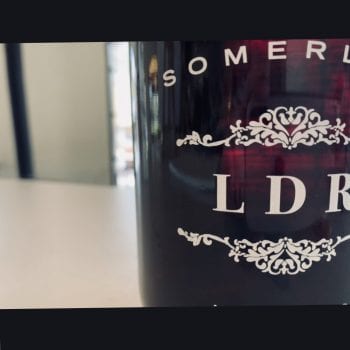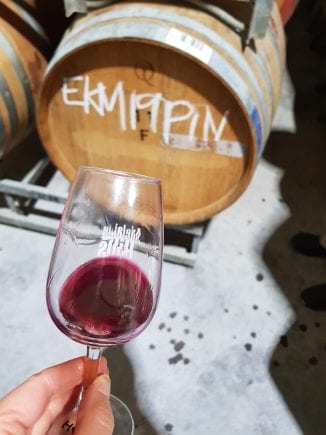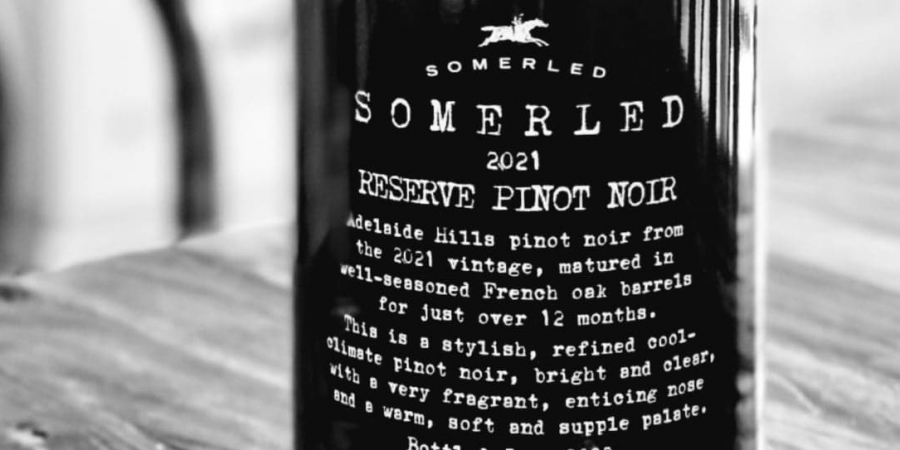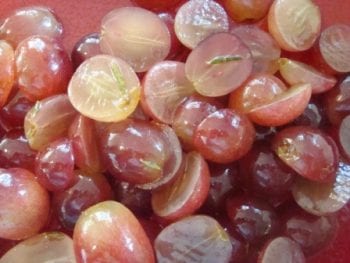 Happy International Pinot Noir Day!
Happy International Pinot Noir Day!
Don’t you just love how there seems to be an infinite number of wine days which just happen to coincide with blog day? I’m seriously not making this stuff up!
To commemorate this popular variety, I’m dedicating this post to it AND if you keep reading you might just find a code that you can use for 10% of your next Pinot purchase.
I know a handful of you came here for the code, but you’re not getting it that easily! You’ll have the read to the end, I’m afraid!
There is a lot I could tell you about Pinot Noir. And I probably will at some later stage! But today I wanted to revisit a question we get a lot at the Cellar Bar.
“How on earth can you make all these different wines with the same grape?
You see, not only does Rob make a dry red Pinot Noir (a Cellar Bar favourite), but he also makes his Sparkling white, Rosé and Light Dry Red (LDR) from Pinot!
But how can one variety do all that??!
I’m so glad you asked. But first, let’s have a quick look at what it is and where it came from…
pee-noe nwahr
Pinot Noir has been grown in France’s Burgundy region for centuries. It’s possible that a clone of Pinot Noir made its way to Australia with the First Fleet in 1788. It was definitely part of the collection of vines that James Busby established in the Hunter Valley in the early 1800s.
Today Pinot Noir is the most widely planted red varietal in the Yarra Valley. The cool climates of Tasmania and the Adelaide Hills also offer great sites for Pinot Noir. The Pemberton and Great Southern regions in Western Australia are also showing potential.
Winemakers love a challenge, and there is no doubt that Pinot is a challenging grape to grow. It’s even more challenging to make. The Burgundians have certainly nailed it. Although, they have been practising for thousands of years. The cool climate of Burgundy has proven to be a major factor, as is the geology of the soils there. Vine age is also critical. True of most varieties, but especially Pinot Noir, the best fruit tends to come from mature vineyards. Around 15 years old or more. Yields too, need to be kept low to get the best out of this grape. It needs all the flavour concentration it can get to show its best.
Somerled Pinots
 Sparkling white
Sparkling white
We’ve talked a lot about how to make a Sparkling white wine from Pinot Noir. But let’s just quickly revisit how Rob manages to make such a colourless wine from a red grape.
The key to remember here is that like most other red grape varieties (including the ones you put in your fruit salad), Pinot Noir has white flesh. So, when you look past the red skin, the inside of the grape AND the juice is white (or colourless).
Making a beautiful, delicate and crisp sparkling white from Pinot Noir isn’t quite as simple as Rob makes it look though (or as I am going to make it sound!)…
- Grapes are handpicked – so that the bunches and berries remain intact
- … nice and early – the riper the grapes the more developed the colour, so best to get in early before that happens
- Then chilled – to prevent fermentation starting before the juice is pressed
- Whole bunches are pressed gently and the clear juice is collected. The trick with this is not to get too greedy with the juice. The more it is pressed the more colour is extracted. So, Rob stops pressing before the colour gets too intense.
Of course, some colour in the juice is inevitable. What is interesting though is that Rob finds that after the primary fermentation, there is almost no colour at all left in the wine. And after the secondary malolactic fermentation, the colour drops even further.
So… I guess if you wanted to make a pink sparkling then you have to start with a fair amount of colour in the juice.
Pinot Noir Rosé
 Building on what we know about making a white sparkling from red Pinot Noir grapes, it’s pretty easy to imagine how you can make a pink wine
Building on what we know about making a white sparkling from red Pinot Noir grapes, it’s pretty easy to imagine how you can make a pink wine
This post will remind you of all the details but in short, this is how Rob does it…
- Grapes are picked early (but not too early) – compared with the grapes for his Sparkling, Rob will pick his Rosé grapes a little later. Ideally, they’re at around 12 Baumé as Rob is aiming for the finished wine to be at around 12.5% alcohol. When the grapes are riper, they also have more colour.
- Grapes are chilled – to prevent fermentation starting before the juice is pressed
- Whole bunches are pressed – but not so delicately this time. Rob is obviously aiming for some extraction of colour from the skins but not too much. He is aiming for an extremely pale, blush colour. Keep in mind what I said above about both the primary and secondary fermentations causing the colour to drop out of the wine. Getting the colour spot on is no simple task.
Now, we should make a comment here about the old days. In the past, we drank a lot of sweet Rosé which was also very deep in colour. Rob gets a bit upset when he hears people putting down this style of wine. Ok, so it’s not quite the style many of us prefer these days, but it doesn’t mean they weren’t well made. On the contrary… many of them were beautifully made. It’s just that the style is no longer what is preferred.
Loving our blog? Sign up for weekly updates straight to your inbox…
Light Dry Red (LDR)
 As many of you know, this particular wine came about in 2020 when we were unable to secure Kim Anderson’s fruit for our dry red Pinot. That was all thanks to the bushfires which devastated parts of the Adelaide Hills at the end of 2019.
As many of you know, this particular wine came about in 2020 when we were unable to secure Kim Anderson’s fruit for our dry red Pinot. That was all thanks to the bushfires which devastated parts of the Adelaide Hills at the end of 2019.
To make this one, Rob…
- Harvested the grapes nice and early
- Fermented it for less than a week on skins
- Stored the wine in stainless steel tanks (not barrel) while it went through full malolactic fermentation
- Cold stabilised and bottled the finshed product
… all in just a few short months!
And the result? Here’s what Rob has to say about his 2021 version…
“The result is just what I wanted – clear, very bright, not too deep colour, an amazingly perfumed fragrant nose and a light but flavoursome and very soft palate. It’s low in alcohol from the early picking and that helps to enhance the softness.
The wine is designed to be both an aperitif (chilled or not) or a great wine with light food such as Thai, poultry and maybe even fish”
Unfortunately, we’re all out of the LDR for the moment. But the excellent news is that it is being bottled early next week, then labelled and should be ready for your glass in the not too distant future!
Dry red Pinot Noir
 In terms of colour for the dry red, time on skins in the key. In short, this is how it is done…
In terms of colour for the dry red, time on skins in the key. In short, this is how it is done…
- Grapes are machine harvested when they are nice and ripe (but not too ripe!). Ideally, the grapes are at around 13 Baumé when they are picked. Rob is aiming for approximately 14% alcohol in the finished wine. Nothing more.
- Grapes are crushed and left sitting on skins for 7-8 days to develop the colour (and flavour of course) while fermenting.
What style of Pinot does Rob make?
Cloudy, funky, lots of oak, high in alcohol, forest floor flavours… are not words you’ll hear to describe Rob’s Pinot (almost got you, didn’t I?!)
Rob aims for a wine that is bright in the glass with distinctive Pinot aromas. He doesn’t mind some complexity as long as you can still tell it’s Pinot. It also has to be soft, which is why he keeps the alcohol low. He doesn’t mind a bit of tannin, but it needs to be soft and ripe, not lean and green.
Yum!
Alright, well done getting to the end. Here it is…
PINOTDAY
enter this discount code at the checkout to take 10% off your (minimum) 6-pack order of any of our wines made from Pinot Noir.
That’s…
Sparkling Pinot
Rose
Pinot Noir
or a combination of all three!
As always, you can email your order to me and I’ll do all the hard work for you!

 Sparkling white
Sparkling white
Hi Maree,
I have been reading your blog since my subscription and I find it very down to earth explaining the life of your part of the world and the life of wine making. Keep publishing it and just so you know there are some like me keeps reading it like the Racing Form guide every weekend.
Cheers
Alex
How lovely to hear from you Alex… thanks for your feedback and for reading every week! Glad you’re getting something out of it!